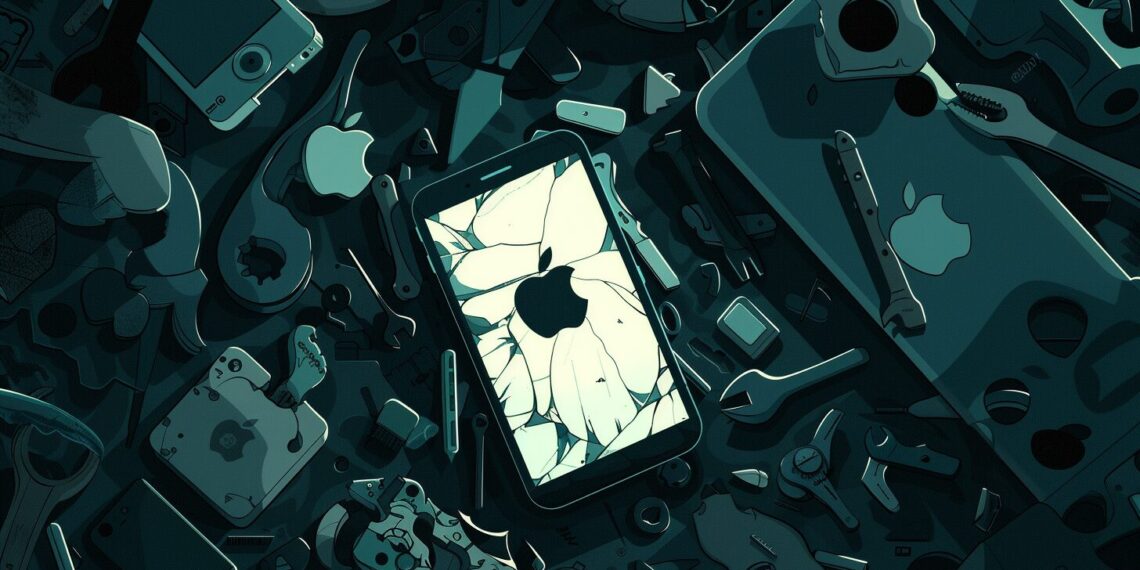Apple’s recent legal battle over the right to repair has sparked discussions about consumer rights versus corporate control. Apple’s stance on requiring specific parts for repairs limits the options available for fixing electronic devices. This not only affects individual users but also raises concerns about the environment and sustainability. The standoff highlights the changing dynamics of technology ownership and the responsibilities that come with it. Keep an eye on this issue to understand its impact on the tech industry and society.
Key Takeaways
- Apple’s recent legal challenge regarding the right to repair has ignited a debate on consumer rights versus corporate dominance.
- The company’s policy of mandating specific components for repairs restricts the alternatives for mending electronic gadgets.
- This situation impacts not only individual consumers but also brings up issues regarding the environment and sustainability.
- The conflict underscores the evolving nature of technology ownership and the accompanying obligations.
- Monitoring this topic is essential for understanding its repercussions on the tech sector and broader society.
Legal Basis for Apple’s Challenge
Apple’s legal opposition to the right to repair legislation is based on its strong desire to keep control over the repair processes of its devices. By challenging laws like the one in Oregon, Apple seeks to preserve its authority over the repair ecosystem, covering both hardware and software. This approach is consistent with Apple’s overall objective of setting repair standards and reducing outside involvement in its exclusive repair methods. The company’s objection to legislative efforts that support the right to repair underscores its preference for maintaining control over environmental sustainability and user freedom. Apple’s actions in various states demonstrate a deliberate effort to protect its repair monopoly, which could impede progress toward a more accessible and consumer-oriented repair environment.
Implications for Right to Repair
The implications for the right to repair legislation, considering Apple’s control strategies and parts pairing practices, are complex and have ignited discussions about user ownership and environmental sustainability. Apple’s approach of parts pairing limits repair possibilities, raises costs, and contributes to electronic waste by complicating the reuse of components from old devices. This approach not only restricts the users’ freedom to repair their devices but also clashes with initiatives aimed at protecting the environment. In addition, Apple’s strategic resistance to right to repair legislation shows a preference for maintaining control over repairs, restricting users’ capacity to truly own and maintain their devices. Such practices underscore the necessity for laws that guarantee user rights and encourage sustainable repair practices in a society driven by technology.
Industry Response and Advocacy
Industry stakeholders have initiated proactive responses and advocacy efforts in response to challenges posed by parts pairing practices and Apple’s control strategies regarding the right to repair legislation. One initiative is the formation of coalitions and lobbying efforts to advocate for fair repair practices and regulations that emphasize consumer rights. Industry leaders are also engaging in public awareness campaigns to inform consumers about the consequences of restricted repair options and the environmental impact of such practices. These stakeholders are joining forces and resources to push for a movement that demands transparency, accessibility, and freedom in the repair industry.
| Advocacy Efforts | Impact | Importance |
|---|---|---|
| Coalitions & Lobbying | Uniting voices for change | Amplifying advocacy |
| Public Awareness Campaigns | Informing consumers | Empowering informed decisions |
| Push for Fair Regulations | Ensuring consumer rights | Protecting repair freedom |








